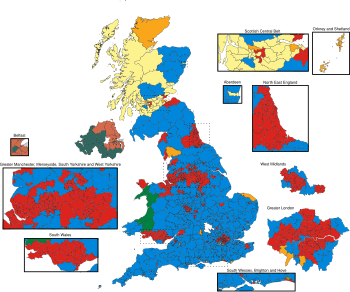Doorashadii Ingiriiska Iyo Xisbigiii Cunsuriga ee Ukib oo Aan Halkursi Helin
|
|||||||||||||||||||||||||||||||||||||||||||||||||||||||||||||||||||||||||||||||||||||||||||||||||||||||||||||
|
|
|||||||||||||||||||||||||||||||||||||||||||||||||||||||||||||||||||||||||||||||||||||||||||||||||||||||||||||
|
All 650 seats in the House of Commons |
|||||||||||||||||||||||||||||||||||||||||||||||||||||||||||||||||||||||||||||||||||||||||||||||||||||||||||||
| Opinion polls | |||||||||||||||||||||||||||||||||||||||||||||||||||||||||||||||||||||||||||||||||||||||||||||||||||||||||||||
| Declared |
99.23%
as of 07:37 BST |
||||||||||||||||||||||||||||||||||||||||||||||||||||||||||||||||||||||||||||||||||||||||||||||||||||||||||||
|
|||||||||||||||||||||||||||||||||||||||||||||||||||||||||||||||||||||||||||||||||||||||||||||||||||||||||||||
|
A map of UK parliamentary constituencies
|
|||||||||||||||||||||||||||||||||||||||||||||||||||||||||||||||||||||||||||||||||||||||||||||||||||||||||||||
|
|||||||||||||||||||||||||||||||||||||||||||||||||||||||||||||||||||||||||||||||||||||||||||||||||||||||||||||
The United Kingdom general election of 2017 took place on 8 June 2017. Each of the 650 parliamentary constituencies elected one Member of Parliament (MP) to the House of Commons, the lower house of Parliament. In line with the Fixed-term Parliaments Act 2011, an election had not been due until 7 May 2020, but a call by Prime Minister Theresa May for a snap election received the necessary two-thirds majority in a 522-to-13 vote in the House of Commons on 19 April 2017.
The Conservative Party, which has governed since 2015 (and as a senior coalition partner from 2010), was defending a majority of 12 against the Labour Party, the official opposition. Theresa May had hoped to get a larger majority for the Conservative Party to “strength [her] hand in the Brexit negotiations”.[1]
The third largest party, the Scottish National Party, had won 56 of the 59 Scottish constituencies in 2015 but returned with fewer seats. Some of these seats went to the Conservative Party, in a reversal of a pattern in other parts of the UK. The Liberal Democrats and the Northern Irish Democratic Unionist Party entered the election as the fourth and fifth largest parties, with 9 and 8 seats respectively.
The outcome of the election was uncertain, resulting in a hung parliament.
Negotiation positions following Britain’s invocation of Article 50 of the Treaty on European Union in March 2017 to leave the EU featured in the election campaign, as did the regular major issues of the economy, education, jobs and the NHS. Following a bombing in Manchester and a terrorist attack in London, leading to temporary campaign suspensions from 23 to 24 May and on 4 June respectively, national security became a particularly prominent election issue. Opinion polling for the popular vote since the election was called gave May’s Conservatives a lead over Labour led by Jeremy Corbyn, although their lead narrowed significantly over the course of the campaign.
Exit polls and early results indicated that the Conservatives would lose seats and their majority, while Labour would increase its seat count.[2]







